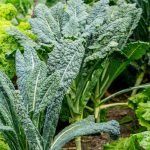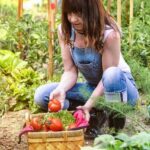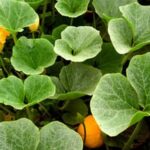What is container vegetable gardening? Container vegetable gardening, also known as pot gardening, is a method of growing vegetables in containers instead of traditional in-ground garden beds. This practice is perfect for those with limited outdoor space, such as small urban areas or apartment dwellers. In this article, we will explore the ins and outs of container vegetable gardening to help you get started on your own thriving mini-garden.
Container vegetable gardening offers an opportunity for anyone to grow their own fresh produce, regardless of their living situation. Whether you have a balcony, patio, or simply a sunny windowsill, you can create a bountiful vegetable garden in containers. From choosing the right containers and selecting the best vegetables to understanding soil requirements and dealing with pests and diseases, this comprehensive guide will cover everything you need to know about successfully growing vegetables in containers.
Additionally, we will discuss the importance of sunlight and location for container vegetable gardening and provide tips for watering and maintenance. By the end of this article, you will have the knowledge and confidence to start your own container vegetable garden, allowing you to enjoy the fruits of your labor in no time. So let’s dive into the world of container vegetable gardening and discover how it can bring the joy of fresh homegrown produce right to your doorstep.
Choosing the Right Containers for Your Vegetable Garden
When it comes to container vegetable gardening, the first step is choosing the right containers. The size and type of container you select can have a significant impact on the success of your garden. When choosing containers for your vegetable garden, consider factors such as the material, size, and drainage capacity.
One of the most popular choices for container vegetable gardening is plastic pots. They are lightweight, affordable, and come in a variety of sizes. However, they may not be suitable for all climates as they can deteriorate when exposed to extreme heat or cold. Another option is terracotta pots, which are durable and provide good insulation for plant roots. However, they can be heavy and may dry out more quickly than other materials.
For those looking for a sustainable option, consider using fabric grow bags made from breathable material that promotes proper drainage and air flow to the roots. These bags are lightweight, easy to store, and allow for easy transportation if needed.
It’s important to ensure that whatever type of containers you choose, they have adequate drainage holes in the bottom to prevent waterlogged soil. Proper drainage is essential for healthy root growth and overall plant health.
| Container Type | Pros | Cons |
|---|---|---|
| Plastic Pots | Lightweight; Affordable; Variety of Sizes | Deterioration in Extreme Weather |
| Terracotta Pots | Durable; Insulate Roots; Good Drainage | Heavy; May Dry Out Quickly |
| Fabric Grow Bags | Breathable Material; Lightweight; Promotes Drainage/Air Flow | Erosion Over Time |
Selecting the Best Vegetables for Container Gardening
When it comes to container gardening, choosing the right vegetables is crucial for a successful harvest. Not all vegetables are well-suited for container growing, so it’s important to select varieties that thrive in small spaces and shallow soil. Here are some of the best vegetables for container gardening:
Tomatoes
Tomatoes are one of the most popular vegetables to grow in containers. There are a wide variety of tomato plants that are specifically bred for small spaces, such as patio or dwarf varieties. These plants produce an abundance of fruit and can be easily trellised or staked in a container.
Peppers
Peppers, both sweet and hot varieties, are another excellent choice for container growing. Compact pepper plants can produce a bountiful harvest in containers, and they require relatively little maintenance. Choose smaller pepper varieties like bell peppers or banana peppers for best results.
Lettuce and Salad Greens
Lettuce and other salad greens are ideal for container gardening, especially if space is limited. These fast-growing vegetables don’t require deep soil, making them perfect candidates for pots or window boxes. Plus, you can continuously harvest leaves throughout the growing season.
By selecting the best vegetables for your container garden, you can enjoy a fruitful harvest even with limited space. With proper care and maintenance, these container-grown vegetables will provide you with fresh produce throughout the growing season.
Tips for Soil and Fertilizer for Container Vegetable Gardening
Container vegetable gardening can be a convenient and practical way to grow your own produce, even if you don’t have access to a traditional garden plot. When it comes to soil and fertilizer for your container vegetable garden, it’s important to choose the right materials and provide the necessary nutrients for your plants to thrive.
Here are some tips for soil and fertilizer for container vegetable gardening:
- Choose a high-quality potting mix: When selecting soil for your containers, opt for a lightweight potting mix that is specifically formulated for container gardening. This type of soil will provide good drainage and aeration, which are essential for healthy plant growth in containers.
- Consider adding organic matter: To enrich the soil in your containers, consider adding compost or well-decomposed organic matter. This will help improve the overall structure and fertility of the soil, providing essential nutrients to your vegetable plants.
- Use slow-release fertilizers: In addition to using quality potting mix, consider incorporating slow-release fertilizers into your container garden. These fertilizers can provide a steady supply of nutrients to your plants over an extended period of time, reducing the need for frequent fertilization.
By following these tips for soil and fertilizer for container vegetable gardening, you can create an optimal growing environment for your vegetable plants, leading to a bountiful harvest of fresh produce right from your own patio or balcony.
Watering and Maintenance for Container Vegetable Gardens
Container vegetable gardens require regular watering to keep the soil moist and provide essential nutrients to the plants. The type of container used can affect how often you need to water your vegetables. Terra cotta pots, for example, tend to dry out faster than plastic or metal containers.
It’s important to check the moisture level of the soil regularly by sticking your finger into the top inch of the soil. If it feels dry, it’s time to water your plants.
In addition to watering, maintenance of container vegetable gardens includes regular monitoring for pests and diseases. Insects such as aphids, spider mites, and whiteflies can be common problems in container gardens. Regularly inspect your plants for any signs of pest infestations or disease. You can also promote healthy growth by pruning and removing any dead leaves or stems from your vegetable plants.
Proper maintenance also involves providing support to vining vegetables like tomatoes, cucumbers, and beans as they grow. Depending on the variety, these plants may require stakes or cages to keep them upright and prevent them from sprawling outwards. By staying on top of watering and maintenance tasks, you can ensure a bountiful harvest from your container vegetable garden.
| Container Type | Watering Frequency |
|---|---|
| Terra cotta pots | Every 1-2 days |
| Plastic or Metal Containers | Every 2-3 days |
Importance of Sunlight and Location for Container Vegetable Gardening
Container vegetable gardening is a great option for people with limited outdoor space or poor soil quality. One of the most important factors in the success of a container vegetable garden is the amount of sunlight and the location where the containers are placed.
Importance of Sunlight
Sunlight is crucial for the growth and development of vegetables in container gardens. Most vegetables require at least 6-8 hours of direct sunlight each day to thrive. Without enough sunlight, plants may become leggy, produce fewer fruits, or even fail to grow at all. Therefore, it is essential to place your containers in an area that receives ample sunlight throughout the day.
Choosing the Right Location
The location of your container vegetable garden is equally important as the amount of sunlight it receives. The ideal location should be close to a water source and easily accessible for regular maintenance. Additionally, consider placing the containers in areas that are protected from strong winds, which can dry out plants more quickly and lead to stunted growth.
Consideration for Indoor Gardens
For those who don’t have outdoor space, indoor container vegetable gardening is a viable option. When growing vegetables indoors, ensure that your containers are placed near windows or under grow lights to provide sufficient light for healthy plant growth.
By considering these factors and choosing the appropriate location with adequate sunlight exposure, you can increase your chances of having a successful and bountiful container vegetable garden.
Common Pests and Diseases in Container Vegetable Gardens
When it comes to container vegetable gardening, it’s important to be aware of the potential pests and diseases that can affect your plants. Here are some common pests and diseases to watch out for:
1. Aphids: These small, sap-sucking insects can quickly become a problem in container gardens, especially during warmer months. Keep an eye out for clusters of tiny green or black bugs on the undersides of leaves.
2. Powdery Mildew: This fungal disease appears as a powdery white substance on the leaves of plants. It thrives in humid conditions and can affect a wide variety of vegetables.
3. Spider Mites: These tiny pests are difficult to see with the naked eye, but they can cause damage by sucking the juices from plant leaves. Look for webbing on the undersides of leaves as a sign of their presence.
To prevent and manage these issues in your container vegetable garden, consider implementing integrated pest management strategies, such as regularly inspecting your plants for signs of trouble, using insecticidal soaps or horticultural oils as needed, and providing proper air circulation around your containers.
Remember that maintaining healthy plants through good cultural practices, such as adequate watering and fertilization, can also help prevent pests and diseases from taking hold in your container vegetable garden. By staying vigilant and proactive in caring for your plants, you can enjoy a bountiful harvest without succumbing to common gardening challenges.
Harvesting and Enjoying the Fruits of Your Container Vegetable Garden
In conclusion, container vegetable gardening is a convenient and accessible way for anyone, regardless of living situation, to enjoy the benefits of growing their own produce. Whether you have a small patio, balcony, or even just a sunny windowsill, there are plenty of options for creating your own little vegetable garden. By choosing the right containers and selecting the best vegetables for container gardening, you can harvest delicious and nutritious fruits and vegetables right at home.
Once you have successfully maintained your container vegetable garden through proper soil and fertilizer management, watering and maintenance, and ensuring adequate sunlight and location, you can look forward to the satisfying experience of harvesting your crops. There is something truly special about being able to enjoy the fruits of your labor by picking fresh tomatoes, peppers, herbs, or any other vegetables you have grown yourself. The taste of homegrown produce simply cannot be matched by store-bought alternatives.
While caring for your container vegetable garden may come with its challenges such as pests and diseases, the rewards far outweigh these potential difficulties. By staying vigilant and following best practices for prevention and treatment, you can minimize these issues and continue to enjoy a bountiful harvest from your container garden.
As with any form of gardening, there is always something new to learn and master when it comes to container vegetable gardening – but with patience and dedication, the results are well worth it.
So why not give it a try? Start your very own container vegetable garden today.
Frequently Asked Questions
What Is Considered Container Gardening?
Container gardening is a type of gardening that involves growing plants in containers, such as pots, planters, or even buckets, instead of planting them directly in the ground. This method is popular for people with limited outdoor space or poor soil quality, as it allows them to grow plants on patios, balconies, or other small areas.
Is Container Gardening Worth It?
Many people find container gardening to be worth it for a variety of reasons. Not only does it allow individuals without a traditional garden plot to grow their own fruits and vegetables, but it also provides more control over the growing conditions and can be less physically demanding than traditional gardening.
Additionally, container gardening can add aesthetic value to outdoor spaces while providing fresh produce.
What Vegetables Work Well in Container Gardens?
Several vegetables work well in container gardens, including tomatoes, peppers, lettuce, spinach, radishes, carrots, and herbs like basil and parsley. These plants are generally well-suited for the confined space of a container and can thrive if provided with adequate sunlight, water, and nutrients.
It’s important to choose compact varieties and use appropriately sized containers to ensure the best results when growing vegetables in containers.

If you’re looking to get into vegetable gardening, or are just looking for some tips on how to make your current garden better, then you’ve come to the right place! My name is Ethel and I have been gardening for years. In this blog, I’m going to share with you some of my best tips on how to create a successful vegetable garden.





